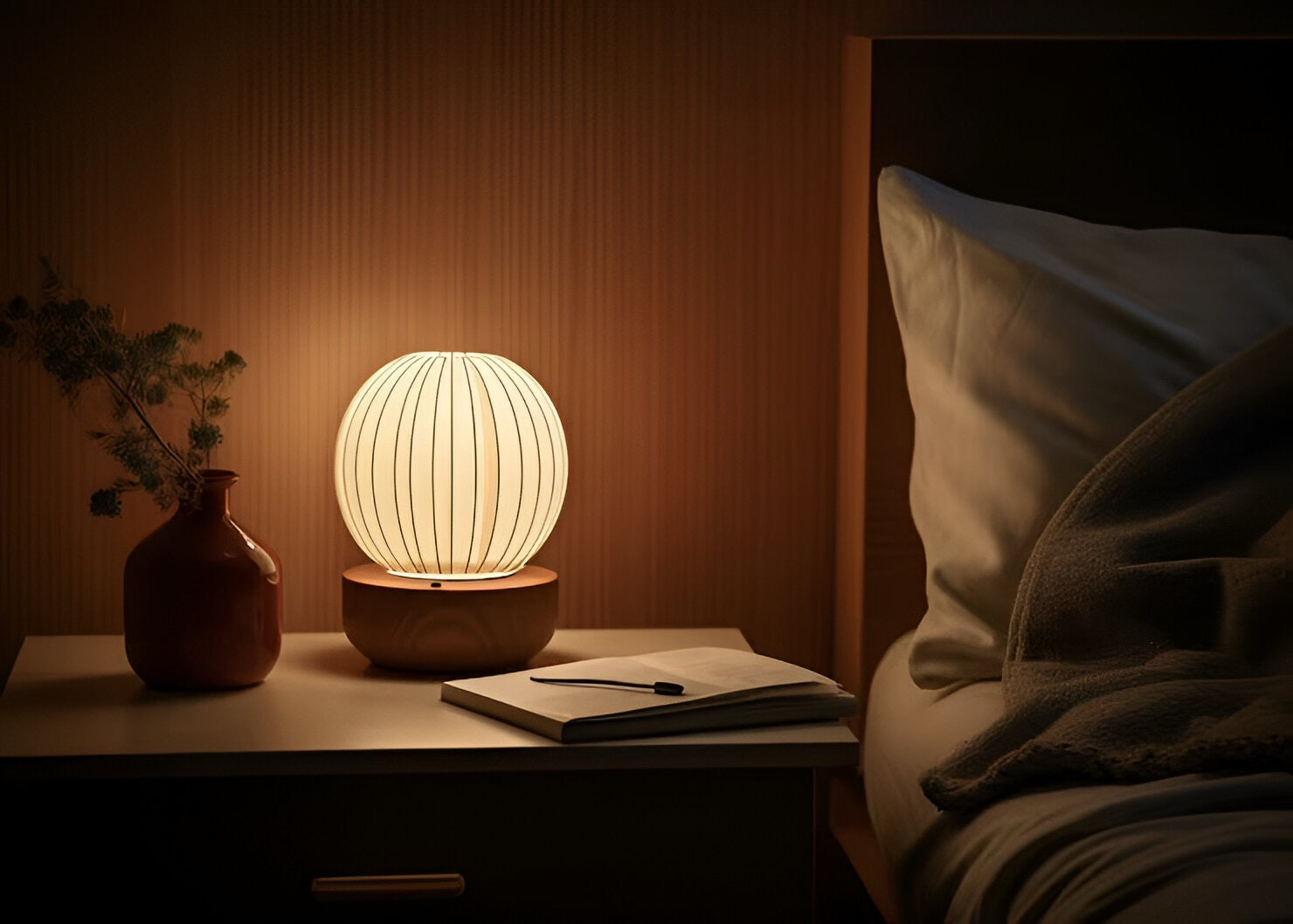
Lighting for works of art
The lighting of art objects in museums, galleries and also in private rooms plays a crucial role in showcasing valuable art. There are a few factors to consider here that require knowledge and understanding of the art. The light distribution, the correct color temperature and the perfect color rendering influence the effect of the work of art.
Each art has its own form of expression and different requirements for the optimal representation to convey the aspects of its creator. If you have purchased a work of art for your home or would like to optimally present a new object, you will find helpful tips for lighting unique works of art in the following article.
The optimal artificial lighting
The goals are clear: you want to ensure that the painting, statue or installation is perfectly visible, all colors are recognizable, the focus is on the details and the work of art is preserved in its original state for as long as possible. A work of art should always offer an experience and that is why the ambience of the room is also important. The viewer enjoys the holistic atmosphere of the room, the presentation area and the artist's creation and can completely immerse themselves in the art object.
Increase the visibility of your artwork!
With the right lighting you can bring a work of art into the focus of the viewer. Details, shapes, colors and textures are clearly visible and the painting, sculpture or art object is presented in a high quality. If the light is too dark, the beauty and message of a painting, for example, will be poorly reflected.
Use modern lamps from ours, for example Online lamp shop from BUYnBLUEto make your works of art optimally visible. Ceiling lamps, floor lamps and wall lights in extravagant and stylish designs you will find here in a selected range.
Pay attention to the excellent color reproduction!
When you illuminate works of art, you not only illuminate them, but also influence the play of colors and possibly even the meaning of the painting or installation. Therefore, the light should transmit the colors in such a way that the integrity of the work is preserved.
Correct color reproduction ensures that viewers of the painting see it as the artist intended, without distortions of perception. Colors can be influenced primarily by light that is too dark or too bright. But lamps that are too warm or lighting that is too cold can also have an enormous influence on color rendering.
Skillfully highlight focal points!
Use balanced lighting to highlight details. A history or a causal connection is easier to recognize and the viewer's experience is improved. This works wonderfully with correctly placed light cones and points of light that highlight details in some areas of the artwork. Lighting like Floor lamps and LED spotlights are ideally suited for this.
Preserve valuable works of art!
If works of art are exposed to a source of light that is too strong, warm or even hot, they can suffer major damage and often need to be painstakingly restored. Delicate materials such as paint, paper, cardboard or wood can easily be attacked and pigments can fade.
Therefore, low UV radiation, optimal light intensity and lighting duration are better for every work of art. Thanks to innovative technology, modern lamps can now be controlled at any time, even while on the move. This allows you to achieve optimal lighting for works of art and ensure their long-term preservation.
Depending on the height, width and size of the work of art, several different lamps are used. If the factory does not require lighting at night, you can equip the lamps with timers. This is how the work will be automatically no longer illuminates at certain times.
Artists use special light sources for their works of art
For an artist, natural sunlight is one of the most important sources of light. He also uses work lighting such as desk lamps and small clip-on lights for creative work. Incandescent lamps, LEDs, special daylight lamps and halogen lamps are often used here.
Creative creators of works of art rarely commit themselves to their work. They continually develop new approaches during painting or production. The incidence of light and the atmosphere also play an important role. Depending on the mood of the day and the weather, the artist is influenced during his work. It's not uncommon for an idea to end up becoming something completely different. If you're not entirely sure what the artist wanted to express, highlighting specific accents and details is always a good idea.
Types of lighting for artwork
You can use different lighting concepts for works of art. In order for your works of art to appear in a perfect light, the color rendering, the heat output of the lamps and the UV radiation must be professionally regulated. There are various light sources that can be used and provide excellent lighting for art objects.
-
Natural filtered sunlight
Sunlight, which creates a lively atmosphere at different times of the day, offers great lighting accents, is economical and You can use special protective films so that the work of art is not damaged by UV radiation. Make sure that the light does not hit the artwork directly and increases and decreases in intensity with different seasons. Skylights or hatches cast a bright but pleasant light into the room and can be closed or opened further. If you place pictures opposite windows, darkening is definitely necessary depending on the angle of incidence.
Sunlight can be diffused as desired and harsh shadows can easily be minimized. Skylights can provide a controlled and uniform natural light source, reducing the effects of direct sunlight and providing even lighting. Transparent curtains, blinds or frosted glass are easy diffusers. This is how the light radiation is controlled and regulated.
Light-resistant works of art such as sculptures made from robust materials look great in front of windows, while delicate and light-sensitive works such as photographs or old paintings should not be placed in direct sunlight. At the same time, use reflective surfaces of mirrors or light-colored walls to further diffuse natural daylight into a room to better showcase your artwork. -
Blackouts
To ensure that works of art are not damaged by light reflections, strong UV radiation or glare, gallery owners and artists use UV films that contribute to their preservation. Sunlight creates additional heat, which is why art objects are often exhibited in large, well-cooled rooms, such as museums and large halls.
The ambience and temperatures are also controlled using shading devices and air conditioning systems, as many old or special paintings are exposed to the natural aging process over the years and need to be protected. Curtains, blinds and shutters in galleries are closed promptly after visiting hours so that the light can no longer harm the works of art. -
Modern LED lamps
LED lamps for artwork offer various advantages. They hardly give off any heat, are energy efficient and the color temperature can be adjusted individually. With modern LED lamps you can fine-tune the lighting for individual works and adapt the illuminance to the specific requirements of different art objects.
There are also LED lamps with UV filters and coatings to minimize UV radiation. Install LEDs with dimmers to adjust the light intensity and create a special atmosphere for the visitor.
LED lamps are economical and long-lasting. Install them in track or recessed lighting to create even lighting. Thanks to your flexibility in distribution and installation, you can create great accents with LED lamps. Direct the eye-catcher specifically to the desired work of art and let it come to life!
How to illuminate your artwork in the living area
Do you want to optimally illuminate a special picture or art object in your home? So that every guest can admire the work of art at any time and the work is not damaged, similar rules apply to the art lighting in your living area as in a gallery.
The atmosphere and the precise effect of light are very important. For your home there is Online lamp shop from BUYnBLUE high-quality and exclusive lamps for every design. So that the lamps match your furnishing style and the art on display, choose lamps and lights with different color rendering and light intensity. Make sure the color temperature is consistent so that the room becomes an excellent exhibition space for the artwork.
Larger sculptures look perfect in the center of large rooms and in front of windows. Use highlight and focus lighting to draw attention to your art objects. Spotlights, ceiling lamps and floor lamps are suitable for throwing a targeted beam of light onto the work of art. You can also use dimmers to compensate for unevenness.
Subdued light puts less strain on the eyes and the works of art are better preserved. Create a gallery-like atmosphere with exclusive lamps and illuminate your art at home just as professionally as in a museum or public exhibition.
Conclusion
Lighting plays a very important role in works of art. Optimal art lighting presents the work in the right light, tells the story and message of the creator and preserves the art object.
Because real works of art are often very rare and expensive, they also enhance your rooms. With different and multi-layered lighting, they create the right ambience and the optimal climate for pictures, paintings and sculptures.
With high-quality and modern lamps you can combine works of art excellently with your interior style and offer a real experience when viewing great creations.


